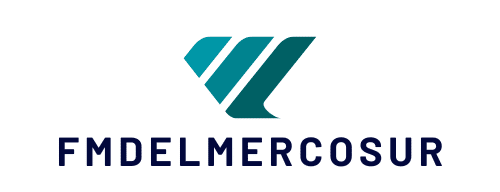Can Wearable Tech Improve Dietary and Physical Activity Adherence in Weight Management Programs?

The dawn of technology has revolutionized our daily lives, making tasks more manageable and efficient. One such technological development that’s caught the world’s attention is wearable tech, which has provided an innovative approach to personal health and fitness. The rapid adoption of devices such as fitness trackers, heart rate monitors, and smartwatches has sparked interest in the scientific community. Scholars have begun studying their potential impact on dietary and physical activity adherence in weight management programs.
Understanding the Connection between Wearable Tech and Weight Management
To fully appreciate the potential of wearable tech in weight loss interventions, one must first understand the integral role that diet and physical activity play in weight management. The balance between energy intake (through food and drink) and energy expenditure (through physical activity) determines weight gain or loss. Therefore, consistent adherence to dietary restrictions and regular physical activity are the cornerstones of most weight management programs.
Sujet a lire : What Are the Impacts of Remote Work on Physical and Mental Health?
However, maintaining adherence to these programs can be challenging. This is where wearable tech comes in. Researchers believe that by providing real-time feedback, personalized insights, and motivational prompts, these devices can increase adherence to dietary and physical activity plans. This intervention, in turn, may lead to greater weight loss and improved health outcomes.
The Role of Wearable Tech in Dietary Adherence
In the realm of dietary adherence, wearable devices can play an influential role. Many of these devices include nutrition tracking features, where users can log their intake of meals and snacks, allowing the device to calculate the total caloric intake and nutritional content. A study published in the Crossref journal reported that participants who logged their food intake regularly lost more weight than those who did not.
A découvrir également : What Are the Effects of Gluten-Free Diets on Non-Celiac Gluten Sensitivity?
Moreover, some wearable devices can sync with popular nutrition apps, providing users with a broad range of nutritional information. This technology also allows for more informed food choices. For instance, if a user is about to exceed their daily caloric intake limit, the device can alert them in real time, providing an opportunity to reconsider their selection.
The Impact of Wearable Tech on Physical Activity
Moving onto the physical activity aspect, wearable tech can be particularly influential. These devices are often equipped with various sensors that can track steps, measure heart rate, calculate calories burned, and even monitor sleep patterns.
In one review paper, researchers collected data from multiple studies where participants were provided with fitness trackers. They found that participants who used these devices increased their physical activity levels by approximately 30%. The feedback from the devices motivated users to move more and reach their exercise goals.
Devices can also connect to fitness apps or online communities where users can share their progress, participate in challenges, or receive support, which can further motivate adherence to physical activity. A study by Google Scholar found that users who engaged with the online community linked with their fitness tracker were more likely to stick with their physical activity plan.
The Risks and Limitations of Incorporating Wearable Tech
While wearable tech offers promising benefits, it’s important to be mindful of the potential risks and limitations. There are privacy concerns related to the sharing and storage of sensitive health data. Users must be aware that while these devices can provide beneficial health insights, they are not a replacement for professional medical advice.
Furthermore, not all devices are equally accurate. A study highlighted that while most wearables can accurately count steps, they are often less precise when calculating calories burned. User adherence to these devices is another challenge, as research has shown that many users stop wearing the devices after a few months.
A Final Note: The Importance of Future Research
The use of wearable tech in weight management is a relatively new field, and more extensive research is needed to firmly establish its benefits and risks. Future studies should aim to gather long-term data, including the sustainability of weight loss and physical activity levels achieved with these devices.
Additionally, future research should consider the role of demographic factors, such as age and socioeconomic status, in the adoption and effectiveness of wearable tech. It may also be beneficial to explore how these devices can be integrated into traditional weight management programs to maximize benefits.
In conclusion, while we must recognize the limitations of wearable tech in weight management, we cannot ignore the potential benefits it offers. With further research and development, these devices could become a valuable tool in promoting dietary and physical activity adherence, paving the way for more effective weight management strategies in the digital age.
Nuances of Privacy and Data Accuracy in Wearable Tech
Before we fully embrace the adoption of wearable tech in weight management, it’s critical to address certain risks and limitations that come with it. Foremost among these concerns is the matter of privacy. As these devices continuously gather sensitive health data, users could inadvertently expose themselves to privacy risks. The storage and sharing of such information could potentially be exploited, leading to substantial privacy breaches.
Also, the accuracy of data presented by these devices is a contentious issue. For instance, a Crossref PubMed study pointed out that while most wearable devices are accurate in step counting, they often fall short in calculating calories burned, which is a crucial metric in weight management. This discrepancy can lead to inaccurate feedback and potentially mislead users about their true caloric expenditure.
Another limitation lies in the user adherence to these devices. A Crossref Medline study revealed that many users tend to discontinue using their devices after a few months. This inconsistency can affect the long-term effectiveness of wearable tech in promoting dietary and physical activity adherence.
Finally, it’s vital to emphasize that these devices should not be seen as a substitute for professional medical advice. While they can provide valuable health insights, they are not equipped to diagnose or treat any medical conditions.
Forging Ahead: The Need for More Research
There is no doubt that wearable technology presents an exciting new frontier in weight management. However, as a relatively new area of study, there is much we still need to learn. Future research must focus on addressing the identified limitations and exploring ways to enhance the benefits of these devices.
For instance, long-term data is needed to evaluate the sustainability of weight loss and physical activity levels achieved with wearable tech. Having this information is important to understand the true impact of these devices on long-term weight management.
Furthermore, demographic factors such as age and socioeconomic status should be considered in future studies. These factors could influence the adoption and effectiveness of wearable tech in diverse populations.
Another important area of future research is the potential integration of these devices into traditional weight management programs. Understanding how to best utilize wearable tech in conjunction with established methods could maximize the benefits and lead to more effective weight management strategies.
Conclusion
Wearable devices offer a promising new approach to improving adherence to diet and physical activity plans in weight management programs. Despite the potential risks and limitations, the benefits of personalized feedback, real-time alerts, and motivational prompts are significant.
As we advance further into the digital age, it is crucial to continue exploring how wearable tech can enrich our health and wellbeing. The prospects are exciting – with further research and development, wearable devices could become a fundamental tool in promoting healthier lifestyles and facilitating weight management.
While we celebrate the progress made, we must remain critical and invest in research to ensure that the adoption of this technology is done in a way that is safe, effective, and beneficial to all. After all, technology should serve us, not the other way around.
